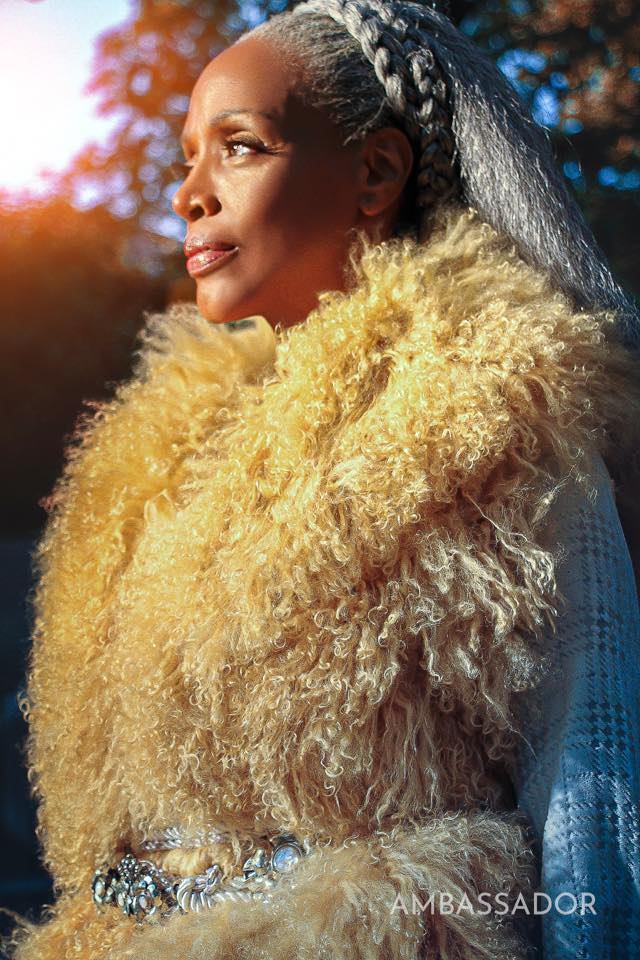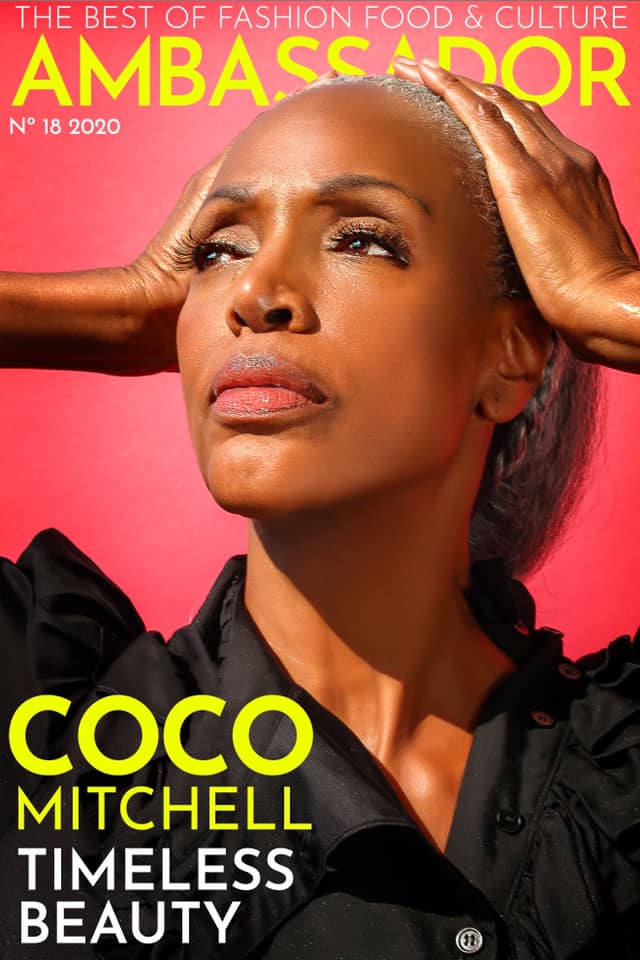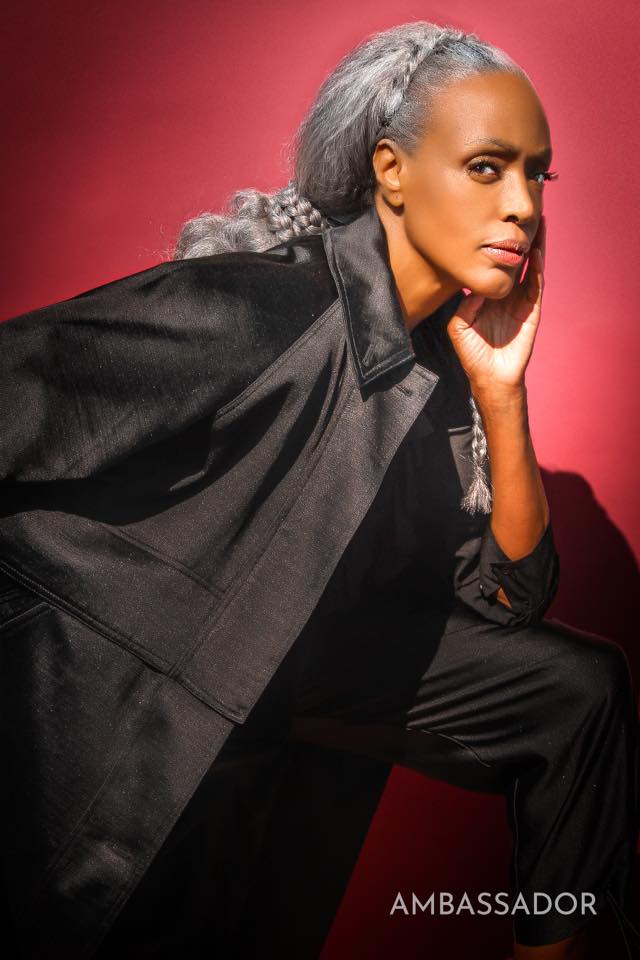If you were in the New York fashion scene in the late 80s, you could not have missed Coco Mitchell, the stunning Black model dating John DeLorean who made the infamous Page Six at every affair they attended together. This was the first of many misconceptions I had about this beautiful, enigmatic woman. To clear things up, she and the late car magnate were only friends. The devout Christian met him at the Unbreakable Chain Church, a Christian worship space flocked to by a number of industry insiders, celebs, actors, musicians, models, designers, you name it. Coco accepted an invitation from DeLorean to accompany him to a party. It was the days of being social if you were a model or tycoon.
The Interview
A
nother misconception was that she was a young ingenue when she started modeling. Actually, she was a grown woman, a teacher in fact, in her late twen?es. In 1980 she was discovered on the streets of New York City by the legendary model agent and pioneer Eileen Ford. She stopped Coco and asked her if she had a book, a model portfolio with fashion images. To which Coco responded, “I have many books.” thinking she meant academic books. She was absolutely clueless about this thing called fashion, but excited it might give her a chance to travel the world. She quit her teaching job and became a model.
B
orn in Tampa, Florida, Coco was raised with four brothers by a single mom and an ultra-strict grandma. Fashion and modeling never entered her consciousness. The most stylish people were in the movies, on TV or on the streets of Harlem where she lived for a few years in the 1950s as a young girl. She saw elegantly dressed women and dapper, three-piece suited men stroll the boulevards. As a new model she quickly booked Mademoiselle and Glamour magazines. Her big break came when she worked with the iconic model Iman for Revlon’s Polished Ambers line, shot by legendary photographer Francesco Scavullo.
T
ired of pounding the pavement, she requested to her agent to move to a sunny climate, which led her to Los Angeles. But there you drove everywhere and not only did she not have a car, she didn’t know how to drive. With determina?on she learned and bought a car from a place called Rent A Wreck. She said, “It was a real wreck. I actually had to climb onto the back seats to get to the steering wheel because the front doors didn’t open.” Undeterred, she signed with Nina Blanchard and quickly became an in- demand, print model. She worked with the late master photographer Herb Ritts and the talented creative director Mathew Rolston.
S
ome of her assignments took her to Florence, Italy. Aber several trips, she declared on the next trip she would stay in Europe. She moved to Milan and signed with Ricardo Guy. She started working with renowned photographer Aldo Falai for Linea Italia. One of her first go-sees (model appointments) was to mega designer Giorgio Armani where she was asked to walk. A term she never heard of. Aber she walked, he looked at her and said, “You’re awful. You don’t know how to walk? Every Black model knows how to walk!” Which was another misconception. But still, Armani booked her for three shows at $15,000 a show. All because she looked like she belonged in the room. Armani actually came backstage and looked at all the models and said, “I picked you because you’re the best in the world.” That was another confirma?on that she belonged there even though she didn’t know what she was doing. It was then that a fashion show photographer took her under his wing. He took her to the pit, which was just below the front of the runway and it was elevated back then. That was where all the photographers gathered to get the best shots. He made her watch veteran models come down the runway. This helped give her an advantage in geing international exposure on fashion pages like WWD, the industry bible at the time. She learned quickly and booked over 25 shows that season including Valentino, Gucci, Gianfranco Ferre, Armani, Ferragamo and Versace. Paris quickly followed and she began booking all the major houses: Yves Saint Laurent, Givenchy, Thierry Mugler, Sonia Rykiel, Issey Miyake.
C
oco thought she would come do the fashion shows and make all these Black model friends. Another misconception. She made a few friends, but mostly stayed to herself and her boyfriends. She was actually engaged three times. Once at Le Palace, the hot, gender bending, jet set nightclub in Paris, she was seated next to Janice Dickinson. But Iman, the most successful Black model in the world then was also at that table. That truly impacted her. “She (Iman) was a true advocate who used her power to make sure other Black models were treated fairly and recognized. In those days Black models ruled the runways in both America and Europe. We were everywhere.” Fashion houses were populated by Black models like Mounia and Amalia at Yves Saint Laurent or Sandi Bass and Carol Collins-Miles at Givenchy. Coco chose not to be with a fashion house, preferring the freedom of being able to pick and choose and move around. For most models it was about the next assignment, but for her it was all about the experience, the adventure.
A
t Les Bains Douches, the glamorous nightclub, once during fashion week she met the late, great, Mississippi-born, fashion designer Patrick Kelly. He was the first American designer admitted to the prestigious Chambre Syndicale du Pret-a-Porter. “He walked right up to me and said he wanted me to do his show. I smiled, but didn’t know who he was.” She took his card, but didn’t use it right away. That came when she was in a bind and thought to call him. Kelly took her into his home, which was on the Saint Germain des Pres, one of best addresses in Paris. “He even made my outfits to wear to my go- sees.” He used her in his campaigns and collections. He fed his signature fried chicken, collard greens, mac and cheese and cornbread to the snobby, ultra-chic editors and fashion crowd. Kelly was one of her many creative friends who would succumb to AIDS. What she remembers most about the late designer was how very giving he was. “He helped everyone and people just loved him for his raw authenticity.”

A
fter her successful European stint, Coco returned to America where she became the first Black model to appear in the coveted Sports Illustrated magazine. She also landed numerous TV commercials. She walked for several great American designers, becoming the favorite of Bill Blass, Calvin Klein, Badgley Mischka and Donna Karan. But it was a relationship with the design house Chado Ralph Rucci that would prove to be her longest collaboration. American couturier Ralph Rucci’s meticulous attention to detail was not lost on Coco. Over the next 15 years she would serve as his muse, his runway star, help with casting and eventually become his PR specialist and brand ambassador. She was the liaison between Ralph Rucci, the fashion editors and retailers.
T
oday Coco remains a sought-after model represented by Wilhelmina Models and she’s shining a much needed light on an undeserved market, beautiful Black women over 50. Her short silver afro and that undeniable elegance has only grown more alluring with time. Coco is still working with major fashion houses, cosmetic brands, catalogs like Macy’s, and helping guide and support hot, new, Black designers like CFDA winner Christopher John Rogers with her decades of experience in the fashion business. As she puts it, “You have to adapt. Know what’s happening. I don’t model the same way I used to 40 years ago.” And designers and new models are taking notice. “When I see the lineup of these shows, I see myself in those lineups.” From the very beginning when she was told she couldn’t walk, she proved them wrong by becoming a catwalk legend. What she didn’t know, she learned and ultimately mastered. Her expertise is now sought for private coaching, educating and motivating the next generation of models, and working on photo shoots. Coco is also participating in panel discussions for prestigious institutions like Fashion Institute of Technology, The Schomburg Center for Research and Black Culture and the Phoenix Art Museum for the Chado Ralph Rucci exhibit. The days of being on the pages of the tabloids are long gone.
S
he will quickly tell you, “I was there with the best of them at the most fabulous parties with all the celebrities and icons. We partied I did all of that.” Further putting to rest any misconceptions. Coco’s longevity she attributes to her faith in God and the standards she set for herself. Her unique and elegant presence serves as a reminder of a magical moment in fashion that simply says, “I’m still fabulous.” - Musa Jackson
Musa Jackson







